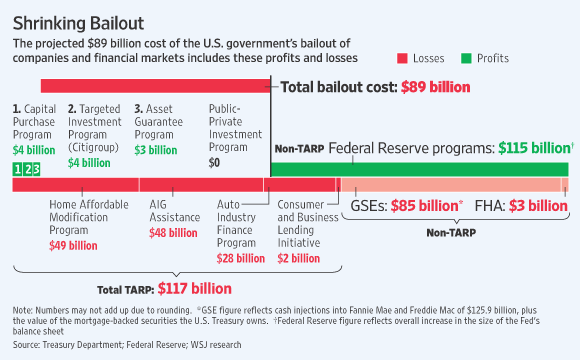Hi Guppies,
Your friend, Gene Kernan, has recommended this article entitled 'New Goldman PR Disaster: Execs Celebrated Subprime Implosion' to you.
Here is his/her remark:
I'm shocked!! And dismayed!!! Well, not really.
New Goldman PR Disaster: Execs Celebrated Subprime Implosion
Posted By Yves Smith On April 24, 2010 (11:01 am) In Banking industry, Credit markets, Derivatives, Free markets and their discontents, Investment banks, Media watch, Social values
It’s ironic how the “Goldman was so smart to have shorted subprime” meme is now being turned on its head in the MSM as Goldman’s conduct in the run-up to the crisis is begin re-examined in a new light.
The underlying premise of the Goldman defenders is that it is fine for the firm to have laid off its exposures whether via the old-fashioned mechanism of selling them, unbundled, into the market, or the modern way of wrapping them into more complex products. The very reasons that the latter yielded better results at the time are the very same reasons that strategy is being criticized now.
First, the products were often so complex as to be difficult for investors to analyze. Crudely speaking, that means you have a bigger universe of potential stuffees, since presumably some would have rejected these exposures had they understood what they were getting. Of course, one might reasonably say, “Don’t buy anything you don’t understand,” but I would hazard that a lot of supposedly professional investors routinely buy products they don’t understand based on a salesman’s explanation. Since most of them did not blow up, or when the did, the investor in question had so much company as to suffer not career damage, many investors became desensitized. Second, major financial firms, and Goldman in particular, came to treat customers as trading counterparties, meaning if it was possible to nick a profit from them, that was always the preferred course of action. Yet many of these customers appeared to have assumed the relationship was on! a different footing, that Goldman at a minimum (consistent with its continued blather about putting customers first) was not rapacious and would deal with them honestly and fairly.
And now Goldman’s PR is in a head-on collision with granular examination of its conduct. Its posture, that it was merely acting as a middleman and therefore providing a socially useful function, does not square with its having continued to push subprime products like its Abacus program out the door as a way to achieve a short position.
From the Wall Street Journal:
New documents from a Senate investigation show top Goldman Sachs Group Inc. executives cheering the gains they were reaping as subprime-mortgage securities collapsed in value in 2007….
In a statement Saturday, Sen. Carl Levin, chairman of the subcommittee that will hear the Goldman testimony, said investment banks such as Goldman Sachs “were self-interested promoters of risky and complicated financial schemes that helped trigger the crisis.”
In one of the email exchanges, Mr. Blankfein appears to bluntly acknowledge the firm’s strategy in broad terms. “Of course we didn’t dodge the mortgage mess,” Mr. Blankfein said in an email on Nov. 18, 2007. “We lost money, then made more than we lost because of shorts. Also, it’s not over, so who knows how it will turn out ultimately.”…
The emails also show other Goldman officials cheering the news that some mortgage-related securities were being downgraded by credit-rating firms in late 2007.
Top trader Michael Swenson said that as a result of the downgrades, certain payments Goldman owed to investors would “go to zero.”
“Sounds like we will make some serious money,” responded another executive, Donald Mullen.
At another point in July 2007, Goldman executives appear to discuss how their mortgage investment numbers were up, despite big losses on securities known as collateralized debt obligations and residential mortgages.
“Tells you what might be happening to people who don’t have the big short,” wrote Chief Financial Officer David Viniar in an email.
Article taken from naked capitalism - http://www.nakedcapitalism.com
URL to article: http://www.nakedcapitalism.com/2010/04/new-goldman-pr-disaster-execs-celebrated-subprime-implosion.html








